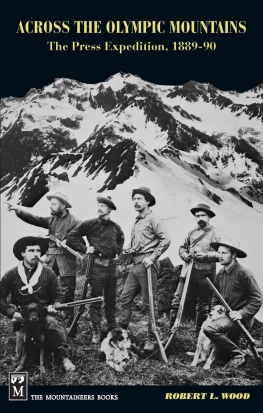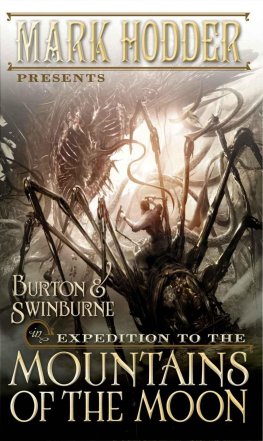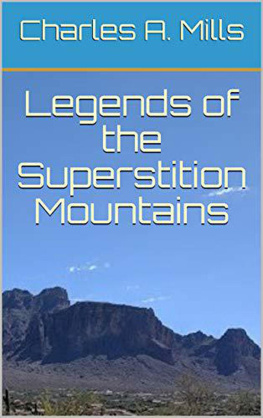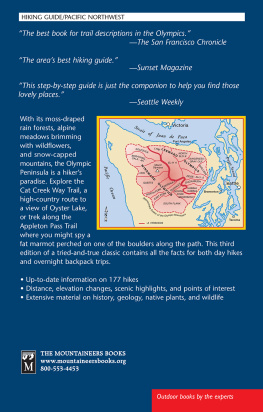He has done much more than present a well-edited version of the original Press account; he summarizes the narrative where details grow dull, adds explanatory notes on the route and speculates about puzzling portions, drawing on extensive personal knowledge of the Olympics. He has also placed the Press Expedition in its historical context and searched every available source for insights into the men and their journey.
Seattle Post-Intelligencer
The excellent photographs, some of which were original expedition photographs saved by Barnes when the raft was wrecked, vividly recall this journalistic adventure.
Choice
In his book Across the Olympic Mountains, Robert Wood has deftly interwoven entries from the journals kept by the men with background commentary based on his own detailed knowledge of the Olympics. The result is a spirited account sure to interest readers who have visited the northwest tip of Washington State, and also valued by anyone interested in the continuing involvement of man with wilderness.
Sierra
The result is a wholly engrossing adventure story out of which emerges a jolly, optimistic innocence of the pioneer spirit facing the sublime innocence of the wilderness. Americana at its truestand best.
Library Journal
The author has climbed extensively in the Olympics and was able to present the old narratives in modern perspective.
The Seattle Times

ACROSS THE OLYMPIC MOUNTAINS
The Press Expedition, 1889-90
ROBERT L. WOOD

 | THE MOUNTAINEERS BOOKS
is the nonprofit publishing arm of The Mountaineers, an organization founded in 1906 and dedicated to the exploration, preservation, and enjoyment of outdoor and wilderness areas. |
1001 SW Klickitat Way, Suite 201, Seattle, WA 98134
Original copyright 1967 by the University of Washington Press
Second edition 1976, 1989 by The Mountaineers Books
All rights reserved
First edition, 1967. Second edition: First printing 1976, second printing 1989, third printing 2013
No part of this book may be reproduced in any form, or by any electronic, mechanical, or other means, without permission in writing from the publisher.
Distributed in the United Kingdom by Cordee, www.cordee.co.uk
Manufactured in the United States of America
All maps drawn by the author
Library of Congress Cataloging-in-Publication Data on file
ISBN (paperback): 978-0-89886-219-5
ISBN (ebook): 978-1-59485-828-4
 Printed on recycled paper
Printed on recycled paper

AUTHORS NOTE ON REPRINT
This book was originally published in 1967. Eight years later the author of a historical atlas I shall refer to him as John Doe claimed that certain peaks named by the Press Expedition had been improperly identified in the past. Although neither my name nor this book were mentioned in the atlas published in 1975, the reference to my conclusions was obvious. Therefore, when the decision was made to reprint Across the Olympic Mountains, I felt it incumbent upon me to examine and evaluate John Does contentions. After duly considering them, I have concluded they are without merit.
The Press Expedition named thirty-six peaks in the Olympics, but three of the names are not shown on Charles Barness map. As a consequence, Mounts Goodwin and Jones cannot be identified, although Old Snowback is readily determined, from Barness narrative, to be Chimney Peak. (It should be pointed out that six peaks not named by the Press Party are designated on the map. They are Mounts Angeles, Claywood, Constance, Olympus, Sutherland and The Brothers.)
Of the thirty-three peaks named by the explorers that are depicted on the map, I positively identified twenty-three in this book because I felt no ambiguity existed regarding them. However, with reference to the remaining ten, I believed (and still do) that serious questions could be raised as to their identification.
My opinions were based not only upon study of the expeditions narratives and photographs, and comparison of Barness map with modern topographic maps, but also upon the additional insight gained from many field trips into the areas in question, including several traverses of the Bailey Range. I do not contend that this renders me infallible; to the contrary, it has caused me to be cautious.
John Doe asserts that I have, through confusion caused by misreading the journals and misinterpreting the map and photographs, mistakenly or erroneously identified a half-dozen peaks. He, however, has no problem, and blithely glides past manifest cases of multiple choice to pinpoint the questioned peaks precisely. Significantly, although he neglects to note the fact, they are with the exception of Mounts Reid and Taylor the peaks to which I gave qualified identification by saying probably or possibly they were certain mountains now known by other names.
Mount Bennett was the name Barnes gave to Mount Olympus, but John Doe narrows the designation to just Middle Peak, not the entire mountain. This is patently absurd. Despite his contention that Barness view of Olympus was obscured by Mount Noyes, the explorer could see, rising above the gap between Mounts Meany and Noyes, the four main peaks of Olympus (East, West, Middle, and Athena) as well as satellites (Circe and the Hermes Pinnacles). All appear in photographs he took from Mount Seattle. Barnes described Mount Bennett as a notable mountain of a peculiar gothic-like appearance surely like a cathedral, the numerous spires and buttresses taken collectively. Obviously he meant the entire mountain, not just Middle Peak; the latter, considered alone, cannot be said to have a gothic-like appearance.
Barness map has meridians of longitude and parallels of latitude, but the degrees and minutes were inadvertently omitted when the map was reproduced in the Seattle Press. Although the missing numbers were supplied in a corrections notice, they are of no assistance in identifying the peaks. For example, they indicate Mount Seattle to be located at longitude 123 32' and latitude 47 40', which would place the peak two miles directly south of Mount Christie, or nearly five miles from its true position. Similarly, Mount Pulitzer would appear one mile southwest of Mount Wilder, or more than five miles from its probable site. Other peaks show comparable dislocations. None, in fact, is properly located by latitude and longitude.
I stand by my previous conclusions, therefore have not changed the statements in the footnotes and appendix. Although most of the peaks can be positively identified, it is my belief that no one will ever be able to determine with absolute certainty the precise identity of at least ten peaks named by the Press Party to wit, Agnus, Barnes, Childs, Ferry, Fitten, Frazier, Holmes, McClure, ONeil and Pulitzer. With all due respect to Charles Barnes, who did his work well under the circumstances, his map is simply not definitive enough to pinpoint these peaks. (I should point out that, subsequent to publication of this book, the unnamed peaks of the Mount Olympus Range referred to on , with reference to Mount ONeil, have been named The Valhallas.)












 Printed on recycled paper
Printed on recycled paper